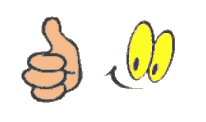
THE USE OF INFORMATION AND COMMUNICATION TECHNOLOGY IN TEACHING OF VOCATIONAL SUBJECTS IN NIGERIA POLYTECHNICS
Students’ learning in tertiary institutions all over the world has undergone tremendous transformations, especially since the advent of Information and Communication Technology (ICT). There is a shift from the traditional approach of teacher directed/didactic to modern method where computer technology plays a significant role. ICT has promoted learning and made it more meaningful where students can stay even in their homes or classrooms and receive lecturers without seeing the lecturer. The aspect of ICT that has brought about this revolution in students’ learning is e-learning.
E-learning as explained by Open Learning Centre (2007) is an educational resource that helps in effective teaching and learning process created through combining e-digital content with local community and tutor support along with global community engagement. It is also an effective and efficient system of self-paced personal training available over the internet. The Commission of Technology and Adult (2001) defined e-learning as instructional content or learning experiences delivered or enabled by electronic technology. Also, Erah (2006) stated that the term e-learning refers to computer-enhanced training as opposed to the computer-based training of the 1980s. It is usually delivered through personal computers and includes learning delivered by other communication technologies.
The devices often used for this purpose include:- laptops or personal computers, CD ROMs. Television, Personal Digital Assistants (PDAs). MP3 players and mobile phones. Communication technologies enable the use of internet e-mail, discussion forms, collaborative software, classroom management software, team learning systems, intranet, extranet, Local Area Network (LAN), Wide Area Network (WAN), audio and videotapes, satellite down links, computerized diagnostic assessment, competency certification and electronic portfolios (Asogwa, 2006).
E-learning is based on electronic formats (Bodys, 2005). It can benefit any students or teacher irrespective of the background. E-learning is a major issue in pedagogy of individualized instruction, self pace study etc, which is; adapting the teaching to the needs of various learners. E-learning provides this by making available the required learning materials for teaching of these vocational subjects which eventually leads to increased graduation rates and lower failure rates of students.
Finally, it promotes equity by providing students with access to courses which may not ordinarily be available and providing teachers with materials for teaching (Asogwa, 2006).
2.2 Concept of Information and Communication Technology (ICT)
Initially in business and other organizations, internal reporting was produced manually and only periodically, as by-product of the accounting system and with some additional statistic(s) and gave limited and delayed information on management performance. Data was organized manually according to the requirements and necessity of the organization. As computational technology developed, information began to be distinguished from data and systems were developed to produce and organize abstractions, summaries, relationships and generalizations based on the data.
Early business computers were used for simple operations such as tracking sales or payroll data, with little detail or structure. Over time, those computer applications became more complex, hardware storage capacities grew, and technologies improved for connecting previously isolated applications. As more and more data was stored and linked, managers sought greater detail as well as greater abstraction with the aim of creating entire management reports from the raw, stored data. The term "MIS" arose to describe such applications providing managers with information about sales, inventories, and other data that would help in managing the enterprise. Today, the term is used broadly in a number of contexts and includes (but is not limited to): decision support system resource and people management applications, enterprise resource planning (ERP), enterprise performance management (EPM), supply chain management (SCM), customer relationship management (CRM), project management and database retrieval applications.
Various authors had define ICT differently, among them is Onuma (2007), he define ICT as the aspect of managing and processing information through the use of electronic computers and computers software to convert, store, protect, process, transmit and retrieve information. It can also been seen as computer-based tools used by people to work with information and communication processing needs of an individual or organization. It encompasses the computer, computer hardware and software, the network and several other devices (video, audio, macro-electronic devices, software etc.) that convert information (text), image, sounds and motion into common form (Akubuilo, 2007). It is the handling and processing of information for use by means of electronic and communication gadgets such as computers such as computers, cameras, telephones etc.
Information is a term with many meanings depending on the context; it is seen as organized data which is understood to have significance and meaning or data that have been processed and presented in a form suitable for human interpretation, often with the purpose of revealing trends or patterns or an organized data that has been arranged for better comprehension and understanding. However, communication takes place when information is shared interchangeably between two or more individual is a major component of ICT is a process by which people exchange information or express their thoughts and feelings.
Technology simply implies the application of knowledge to meet the goals, goods and services desired by the people. It is the innovation, change or modification of the natural environment to satisfy perceived human needs and wants ICT is the scientific tool and techniques for developing, documenting and communicating information when especially as they concern solving problems, providing need services in the various areas of human endeavours. ICT can also be described as a whole range of technologies involved in information processing. It is a term used to described technologies, which receives, record, processes, transmit and retrieves information. It is the handling and processing of information by means of electronic and communication devices such as computers, cameras, telephones etc. It is therefore, a scientific method of sharing, exchanging and sending or moving such information from one place to another
